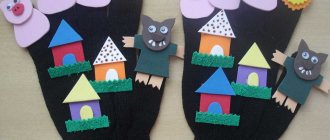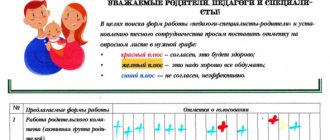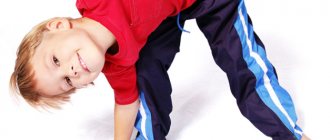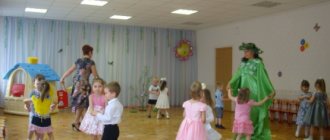In 2020, the government adopted several new standards for the admission of children to preschool educational organizations. What is the essence of the changes, how to organize work in a kindergarten correctly and in a new way, what steps should the manager take, what educators should know - we will briefly consider in the article.
The changes apply at the federal level, so they are valid in each region.
- Benefits for brothers and sisters
- Rules for transfer between kindergartens
- Accounting for the number of foreigners
- Mandatory electronic queue and unified federal system
- Additional information to the rules
Benefits for brothers and sisters
Federal Law No. 411-FZ dated December 2, 2019 obliges us to admit, as a priority, children who have a brother or sister studying in the same kindergarten. This innovation applies not only to kindergartens, but also to schools.
The benefit can be used by parents who have submitted to the regional education department a certificate of registration of the second child at the address where the first one is registered. If the place of residence differs from the place of registration or the children have different places of registration, you must additionally provide a certificate of family composition. It is received at the passport office.
Previously, parents had to take their children to different kindergartens if their place of registration did not match. The new rule has been well received by families because it will free up time for parents. This bill was introduced in the Samara region in 2022. The prosecutor's office closed him down because he infringed on the rights of residents of other regions. And the new law of 2022 was adopted at the federal level, so the conditions are the same for all regions.
How are priorities distributed in the queue?
Children whose brothers and sisters are already studying in kindergarten receive priority over children from the general queue and even over other beneficiaries. The queue order is determined as follows:
- Brothers and sisters of current kindergarten students;
- Children of military personnel, police officers and the Ministry of Internal Affairs, disabled people, large families, single mothers. In some regions, children of kindergarten employees are included in this category, for example in St. Petersburg.
- Babies from the queue according to the date of application;
- Children who are transferred from other kindergartens;
- Children registered at their place of residence.
How to organize innovation in kindergarten
The essence of the new benefit must be conveyed to parents and described in the documents of the preschool educational institution. To do this, post information about the new preferential category on the kindergarten website and on information boards.
Also, change the section of the regulations on admission to preschool educational institutions in 2022. To do this, supplement the section “Procedure for admission of pupils” with information about the preferential category and the sequence of enrollment of children among preferential and non-preferential categories.
Rules for transfer between kindergartens
The rules for transferring children to another kindergarten have been brought into line with the rules for admission:
- Parents submit an application to the regional education department, which means they do not need to apply to the kindergarten. Only if the child is transferred to a private kindergarten, the application is written directly to it, bypassing the education department.
- If the regional authority replies that there is a free place in the new kindergarten, parents receive a referral to this kindergarten.
- Only after this do parents write an application for expulsion from the previous preschool institution.
These procedures can be completed via the Internet in the regional information system.
Daily routine in kindergarten
The routine in kindergarten is the same for all children.
Therefore, if at home you are used to sleeping until lunch, not putting your child to bed and eating whenever you want, then before entering a preschool institution you need to bring your home daily routine as close as possible to the routine in kindergarten. This will help the child during the adaptation period. Typically, three-year-olds easily adapt to kindergarten. At this age, they are ready to communicate with their peers and other adults and gain new knowledge. Being raised at home, the child does not receive the necessary social communication. In addition, in kindergarten, classes with the child are conducted according to a special program that corresponds to his age characteristics.
In a group of peers, it is much easier for a child to learn to communicate or gain self-service skills by looking at other children. And in order for your child to endure the adaptation period even easier, you need to accustom him to the regime within 2-3 months. It is very difficult to maintain a rigid daily routine at home. And in kindergarten it is built optimally for a little person and contributes to his physiological and psychological development.
The regime in different kindergartens may differ, but its principle is the same everywhere.
Approximate daily routine in kindergarten
Meals and sleep remain constant in the daily routine. The walk depends on weather conditions and time of year. If the weather is bad, games or activities are held at this time. Some kindergartens also have a second breakfast.
Do you want to know the microclimate of your family? Take the TEST ON OUR WEBSITE and find out if anything needs to be changed
Also read on our website: Does a child need kindergarten?
Requirements for the daily routine in kindergarten according to SanPiN
Children are provided with four meals a day at the group premises. The interval between meals is no more than 4 hours. For more information about diet, diet and menu, see here.
A walk is organized 2 times a day: in the first half of the day and after sleep, which is a total of 3 - 4 hours. At temperatures below -15°C and wind speeds of more than 7 m/s, the duration of the walk is reduced.
Daytime sleep for children from 3 to 7 years old is 2 - 2.5 hours. During nap time, the presence of a teacher in the bedroom is mandatory. Before going to bed, it is not recommended to conduct active and emotional games and activities.
Independent activity of children 3–7 years old should take at least 3–4 hours a day. This includes independent play, preparation for educational activities, and personal hygiene.
All rooms must be ventilated daily. Through ventilation is carried out at least 10 minutes every 1.5 hours in the absence of children, 30 minutes before they arrive from a walk or activity. In the presence of children, ventilation is permissible only in the warm season without a draft. When ventilating, the air temperature should not drop by more than 2-4°C.
Bed linen is changed at least once a week.
Have you already chosen what to give your baby for New Year? How to please and surprise your beloved baby? The New Year family holiday is an opportunity to give your child bright emotions from shared entertainment. Let your baby remember this magic and fairy tale for the rest of his life! The best New Year's greetings for a baby - personal interactive greetings!
One of the reviews from a caring grandfather: “My granddaughter was still very young when I bought her the very first disc. To say that it is magical is to say nothing! The cub sat with his mouth open and believed that it was really Santa Claus talking to her. I bought it every year and never regretted it. Now, of course, she’s grown up and it’s difficult to surprise her with Santa Claus... Thank you for being able to give your baby a fairy tale for the New Year!”
Download the series as a New Year's gift and you will see how much happiness your child will receive from watching the fairy-tale game plot! Look at all the unusual options for New Year's greetings for your baby HERE!
Organization of classes
It is mandatory for the harmonious development of the child to include developmental activities in the daily routine according to SanPiN, which subsequently serve as preparation for school.
Also read on our website: Crafts from autumn leaves with children
Classes in kindergarten are conducted in the main areas:
- musical;
- physical training;
- art;
- classes to develop fine motor skills;
- speech development classes;
- introduction to basic mathematical knowledge.
Activities that require increased cognitive activity and mental stress of children are held in the first half of the day and alternate with physical education and music classes to avoid overworking the child.
The continuous duration of an educational lesson for a preschooler does not exceed:
- 10 minutes for children 3 - 4 years old (younger group);
- 15 minutes for children 4 - 5 years old (middle group);
- 20 minutes for children 5 - 6 years old (older group);
- 30 minutes for children 6 - 7 years old (preparatory group).
No more than 3 classes are held per day. Breaks between classes are at least 10 minutes.
Physical development classes
Physical development classes are held at least 3 times a week. Their duration ranges from 15 to 30 minutes depending on the age group. In summer, such activities are recommended to be carried out outdoors.
In addition to physical development classes, other forms of physical activity are also used: morning exercises, physical exercises, outdoor games, and in some kindergartens - exercise classes, swimming, etc.
Morning reception for children
Reception of children should be carried out by educators and (or) medical workers. Identified sick children or children with suspected illness are not accepted. If a child falls ill during the day, he is isolated from healthy children (placed in a medical room) until the parents arrive or are hospitalized, with the parents informed.
Accounting for the number of foreigners
Federal Law No. 403-FZ dated December 2, 2019 obliges kindergartens to publicly publish the number of foreign preschoolers. There is no need to disclose other data of migrants in order not to violate legal norms.
Preschool education experts say what this innovation could lead to:
- On the one hand, the attitude towards Russian citizens who are mistakenly mistaken for foreigners will improve. This applies, for example, to residents of the North Caucasus.
- On the other hand, parents can begin to divide groups and kindergartens into “for locals” and “for migrants,” and children can unite into small groups based on linguistic similarity. As a result, queues at individual kindergartens may increase and tension among parents may increase.
To avoid the described difficulties, a rule on the number of foreigners was added to the rules for admitting kindergartens in 2020.
How to organize innovation in kindergarten
To implement the new rule, you need to:
- Create an order for the admission of foreign citizens;
- Add to the document on the distribution of responsibilities a task for the senior teacher - to keep track of the number of foreigners in groups.
- Post information on the website about the number of migrants in the kindergarten.
Consultation “Day routine. Sleep in the first junior group"
Valentina Vilchinskaya
Consultation “Day routine. Sleep in the first junior group"
The daily routine is of great importance for the health and physical development of children . Constant time for eating, sleeping, walking, playing and studying is a prerequisite for the proper upbringing of a child.
routine is a system of distribution of periods of sleep and wakefulness, meals, hygiene and health procedures, classes and independent activities of children. The cheerful, cheerful and at the same time balanced mood of children largely depends on strict adherence to the regime . Delays in eating, sleeping, and walking have a negative impact on the nervous system of children: they become lethargic or, conversely, excited, begin to be capricious, lose appetite, have trouble falling asleep and sleep restlessly.
When organizing sleep, it is important not only to maintain its duration, but also to ensure that children sleep well. Good deep sleep of sufficient duration is very important for the health and well-being of children. If the daily routine , then children develop a rhythm in the change of day and wakefulness. After a good night's sleep, children are usually alert and active.
With a lack of sleep, the endurance of nerve cells in children weakens, a decrease in activity and lethargy occurs. Lack of sleep immediately affects the mood: the child becomes lethargic or, on the contrary, excited, gets irritated easily and at the slightest provocation, cries a lot and often.
When organizing daytime sleep, the following rules are taken into account:
1. When preparing children for bed, the environment should be calm, noisy games are excluded 30 minutes before bedtime.
2. Children with poor health are the first go to bed first .
3. Before going to bed, the bedroom is ventilated with a decrease in the air temperature in the room by 3 - 5 degrees.
In kindergarten, putting children to sleep is much more difficult than at home. The teacher needs to put not one, but many children to sleep at the same time in a relatively short time. Since there are many children, they can naturally disturb each other and fall asleep. Therefore, putting children to bed in a group requires very clearly thought out organization.
By encouraging children to undress on their own, the teacher distracts them from pranks. If the teacher is busy with one child, the rest of the children are not idle at this time, they are busy with something useful and interesting for them - undressing. This is of great importance in kindergarten, where the teacher needs to place not one child, but a group of 20 - 25 children . Children's active participation in undressing ensures their interest and positive attitude towards the process.
Still, children 2 and even 3 years old need, of course, a lot of help from adults. At this age, they still cannot do everything - unbutton a button, untie shoelaces, etc. Sometimes children do all this very slowly, get distracted, and, finally, sometimes refuse to undress not because they don’t know how, but because they are tired or Bad mood. Therefore, the teacher not only helps the children undress, but sometimes undresses them herself, especially those who are weak, tired, or for some reason refuse to undress themselves. However, here too we must try not to leave the child passive, but to involve him in some kind of active participation in a form accessible to him.
Depending on the characteristics of each child, educational techniques should be different. If a child is playing around and doesn’t want to sleep, then you can distract his attention by offering to do something yourself (for example, turn on the other side, adjust his pillow, etc.)
or influence him with calm, affectionate conversation.
If the child is easily excitable and moves a lot, you need to sit next to him, preventing him from moving and having a calming effect on him, but without entertaining him with conversation (pat him, lightly pat him on the back, etc.)
For a good sleep, there should be no bright light in the bedroom light, hot, noisy.
During awakening, a teacher should always be near the children. This circumstance is very important, since not all children get up right away. Usually only a few children wake up at first, while the rest continue to sleep. Therefore, you need to maintain silence for a while so as not to disturb the peace of the children who have not yet woken up. After waking up, each child needs to be lifted out of bed and dressed, without waiting for the others to wake up. When dressing, the teacher encourages children to be independent. When helping one child put on, for example, a dress, you need to monitor the independent dressing of another, older one, and give him instructions: “Kolya, are you wearing your socks? Now take your pants and put them on"
Thus, awakened children do not wait until the teacher can dress them - they themselves are busy and therefore calm. It is good to involve children in mutual assistance.
With all these techniques, the teacher not only develops some skills in children, but also promotes their active behavior, general development and creates a more favorable environment for simultaneously serving a group of children .
Mandatory electronic queue and unified federal system
All data on admission to kindergarten must be entered into the federal information system, namely information about:
- number of seats,
- preferential categories,
- queues.
This means that the queue will become electronic in all regions, and parents will be able to easily monitor the situation in kindergartens. Information from regional services is sent to the federal system. In this way, a single all-Russian queue is formed. Thanks to her, children can easily find a place in a new kindergarten if their family has moved to a new city. It wasn't easy before.
In cities with populations over one million people there is already an electronic queue, so little will change in their work. And kindergartens from small cities and towns will have to introduce a new system in order to meet uniform requirements.
The introduction of a federal waiting list makes the kindergarten admission system more “transparent” for parents. Preschoolers will be accepted under the same conditions. And in a few years, officials will be able to study the statistics on the workload of kindergartens by region, and based on these data, take measures to improve the organization of the preschool education system.
How to organize innovation in kindergarten
Many regions have been maintaining local information portals for several years, so working in a unified system should not cause difficulties. To do this you need:
- Study the regional regulations on the information system;
- Draw up a schedule and instructions for entering and updating data in the information system. Add these instructions to the appointment order;
- Issue an order appointing a specialist to receive and enter data.






